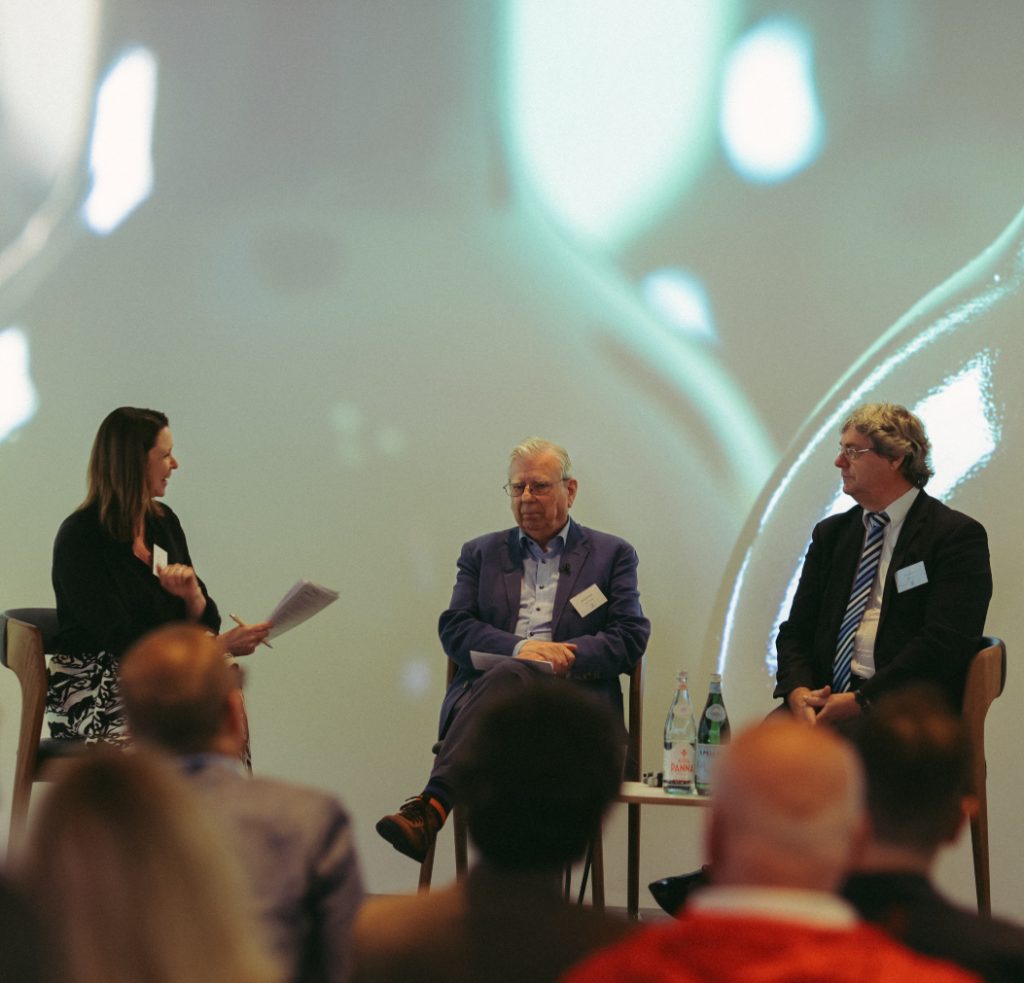Glass: an industry that’s starting to flex?
Author: Barbara Drew MW

Our inaugural Sustainability Forum in June considered the prospects of a carbon-free glass industry. Barbara Drew MW examines the arguments and debates how much still needs to be done.
After a lively panel discussion spanning Bordeaux to the Barossa valley, digging into sustainable ways of working in the vineyard, you’d be forgiven for thinking a debate around the future of glass would be a little less engaging.
Yet, as it turned out, the question of how to create zero-carbon packaging for wine was one that engaged the room, just as it is currently enveloping the wider wine and spirits industry.
Our inaugural Sustainability Forum in June covered a range of topics. Producers from around the world were in attendance to debate, discuss and learn. And we were keen to cover as broad a range of themes within the wine industry as possible.
That meant discussing glass, the most widely used packaging material for wine. It’s also one that currently contributes approximately 40% of our total carbon footprint at Berry Bros. & Rudd.
Our experts on this topic ̶ Dave Dalton, CEO of British Glass and Richard Katz, CEO and founder of Glass Futures ̶ were passionate advocates for the glass industry. Yet, this was no one-sided talk.
Both Dalton and Katz were optimistic about the future for glass in the wine industry. However, both agreed that there is a lot of progress to be made. Katz, for example, acknowledged that the glass-making process produces a lot of carbon dioxide. Nevertheless, once created, glass is infinitely recyclable with no loss of quality.
There are, in truth, very few products – across any industries – that can say this. “Fine wines only really have a marriage with glass. It is the only packaging material that can be made into a carbon-free container. Every other material – be that bag-in-box, plastic bottles or even cans – cannot be recycled”, said Katz.
It is relevant to note, that all of these packaging options – bag-in-box, plastic bottles and cans – involve plastic in some form, whether providing the structure or the lining of the vessel.
However, the recycling of glass itself is something that needs to improve. Some 130,000 tonnes of recyclable glass go to landfill each year. And sometimes schemes to reduce this figure can end up doing more harm than good.
Schemes like deposit returns, which encourage consumers to return bottles for cleaning and refilling, can pose problems. As Dalton mentioned, those bottles can travel hundreds of miles for processing. In so doing, the overall emissions created can be more than making a new bottle.
Caustic soda and the high volume of water needed to clean glass bottles before reuse have their own detrimental environmental impacts. In many cases, grinding the glass down into “cullet” and melting it into new, high-quality glass can be far more environmentally friendly. Assuming, of course, your furnace can be run on clean energy.
This is of course the sticking point. Both speakers debated passionately about new furnaces, far smaller and more efficient than traditional furnaces, which can run on electricity. That electricity can be generated in a green way – using whichever renewable energy source one has to hand.
However, such renewable electricity is not, yet, universally available. In addition, new furnaces are extremely capital-intensive to build. The will is there; however, the momentum has yet to truly pick up.
Some of the most interesting thoughts came from the audience. Acknowledging that glass still has a large carbon footprint, being fragile it poses problems in delivery too. A crate of new glass bottles will generally arrive at a winery wrapped in plastic to ensure they remain sterile. All this additional packaging adds to the footprint, and the waste produced.
Sophia Bergqvist, of Quinta de la Rosa in the Douro Valley, Portugal, said that they have simply eliminated glass bottles for any wines served on their property. Instead, these wines – including their top-tier reserve wines – are served from stainless steel barrels. Once empty, these are cleaned and reused, indefinitely.
Their wines for enjoyment off-property are still sold in glass bottles, and will remain so. Yet this approach – thinking creatively, and looking at alternative solutions wherever possible – is one that the wine trade increasingly needs.
On the surface, it looks as though the glass industry has a problem. Huge furnaces don’t immediately shout “low-carbon product”.
However, like the cork industry before it, glass manufacturers are now both acknowledging and addressing this problem. They are accepting their unique role in the wine industry and focusing their energy on a solution. A truly net-zero, inert, and infinitely recyclable packaging material is just steps away.
Read more articles on sustainability topics here.


